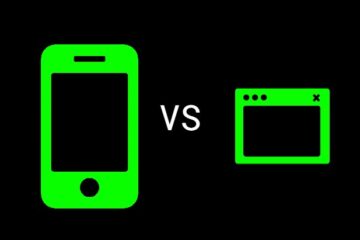Turning an abstract app idea into a fully functional product is both thrilling and fraught with challenges. This comprehensive guide will navigate you through every stage, from conception to post-launch adjustments. These steps do not have to be followed in the exact order laid out here; one can move back and forth between these steps as needed.
Market Research:
Before you dive into development, it’s crucial to understand the market you’re entering. Identify gaps, assess demand, and figure out your Unique Selling Proposition (USP). The more comprehensive your market research, the more tailored your app will be to actual consumer needs. But don’t get stuck there, as without testing you don’t know what will bring success.
Idea Refinement and Technical Feasibility:
This combined stage focuses on crystallizing your app’s concept and evaluating its technical feasibility. Describe the key features, intended users, and monetization strategies. Assess whether your envisioned features are technically achievable in terms of development time, costs, and third-party services or APIs. If costs are prohibitive, you may need to revise your original idea, at least the MVP (minimum viable product).
Specifications, User Stories and UI Design:
Before diving into the technicalities, focus on clarifying specifications, crafting user stories and designing the User Interface using tools like FluidUI, Figma or Balsamiq. These steps provide a human-centric lens to your development, ensuring your app meets the needs and expectations of your intended audience.
Prepare to Development:
This stage involves selecting appropriate technologies like programming languages and frameworks, and assembling your development team. The choice between assembling your development team first or choosing technologies can vary depending on the situation. Both are crucial steps in laying the groundwork for the actual build.
Developing the Actual Application:
This is where the coding starts. Front-end and back-end developers collaborate to bring your vision to life. If your app involves third-party services, this is also the stage to integrate those APIs. Use version control systems like Git to manage your codebase effectively.
Comprehensive Testing:
Start with alpha testing within your internal team to identify any glaring issues. Once those are sorted, move on to beta testing with a smaller external audience to garner constructive feedback.
Deployment and Launch:
Once all kinks have been ironed out, and user feedback has been incorporated, you’re ready for a public launch. Your app becomes available to the wider audience, marking a significant milestone in your journey.
Post-Launch Adjustments:
Your app’s journey doesn’t conclude with its launch. Ongoing success relies on regular updates based on user feedback, performance analytics, and adapting to market trends.
Conclusion:
Turning an app concept into a functional reality can be complicated, but it’s far from impossible. At DarulCode, we have the technical expertise and design acumen to bring your vision to fruition. Curious to see how we can help? Contact us for a custom quote today.


